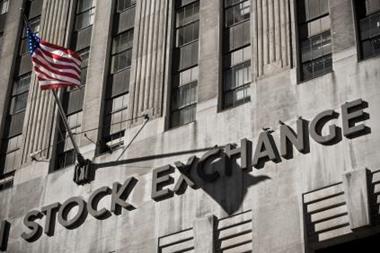Shareholder letter details $12.9bn bailout cash from AIG
Goldman Sachs has detailed its dealing with AIG that led to AIG handing over $12.9bn of government bailout cash to the merchant bank.
In the firm’s letter to shareholder it says:
We limited our overall credit exposure to AIG through a combination of collateral and market hedges in order to protect ourselves against the potential inability of AIG to make good on its commitments.
We established a pre-determined hedging program, which provided that if aggregate exposure moved above a certain threshold, credit default swaps (CDS) and other credit hedges would be obtained. This hedging was designed to keep our overall risk to manageable levels.
As part of our trading with AIG, we purchased from them protection on super-senior collateralized debt obligation (CDO) risk. This protection was designed to hedge equivalent transactions executed with clients taking the other side of the same trades.
In so doing, we served as an intermediary in assisting our clients to express a defined view on the market. The net risk we were exposed to was consistent with our role as a market intermediary rather than a proprietary market participant.
In July 2007, as the market deteriorated, we began to significantly mark down the value of our super-senior CDO positions.
Our rigorous commitment to fair value accounting, coupled with our daily transactions as a market maker in these securities, prompted us to reduce our valuations on a real-time basis, which we believe we did earlier than other institutions.
This resulted in collateral disputes with AIG. We believe that subsequent events in the housing market proved our marks to be correct — they reflected the realistic values markets were placing on these securities.
Over the ensuing weeks and months, we continued to make collateral calls, which were based on market values, consistent with our agreements with AIG. While we collected collateral, there still remained gaps between what we received and what we believed we were owed.
These gaps were hedged in full by the purchase of CDS and other risk mitigants from third parties, such that we had no material residual risk if AIG defaulted on its obligations to us.
In mid-September 2008, prior to the government’s action to save AIG, a majority of Goldman Sachs’ exposure to AIG was collateralized and the rest was covered through various risk mitigants.
Our total exposure on the securities on which we bought protection was roughly $10 billion. Against this, we held roughly $7.5 billion in collateral. The remainder was fully covered through hedges we purchased, primarily through CDS for which we received collateral from our market counterparties.
Thus, if AIG had failed, we would have had the collateral from AIG and the proceeds from the CDS protection we purchased and, therefore, would not have incurred any material economic loss. In this regard, a list of AIG’s cash flows to counterparties indicates little about each bank’s credit exposure to the company.
The figure of $12.9 billion that AIG paid to Goldman Sachs post the government’s decision to support AIG is made up as follows:
- $4.8bn for highly marketable US Government Agency securities that AIG had pledged to us in return for a loan of $4.8bn. They gave us the cash, we gave them back the securities. If AIG hadn’t repaid the loan, we would simply have sold the securities and received the $4.8bn of value in that way.
- An additional $2.5bn that AIG owed us in collateral from September 16, 2008 (just after the government’s action) through December 31, 2008. This represented the additional collateral that was called as markets continued to deteriorate and was consistent with the existing agreements that we had with AIG.
- $5.6bn associated with a financing entity called Maiden Lane III, which was established in mid-November 2008 by the Federal Reserve to purchase the securities underlying certain CDS contracts and to cancel those contracts between AIG and its counterparties. The Federal Reserve required that the counterparties deliver the cash bonds to Maiden Lane III in order to settle the CDS contracts and avoid any further collateral calls. Consequently, the cash flow of $5.6bn between Maiden Lane III and Goldman Sachs reflected the Federal Reserve paying Goldman Sachs the face value of the securities (approximately $14bn) less the collateral (approximately $8.4bn) we already held on those securities. Goldman Sachs then spent the vast majority of the money we received to buy the cash bonds from our counterparties in order to complete the settlement as required by the Federal Reserve.
While our direct economic exposure to AIG was minimal, the financial markets, and, as a result, Goldman Sachs and every other financial institution and company, benefited from the continued viability of AIG.
Although it is difficult to determine what the exact systemic implications would have been had AIG failed, it would have been extremely disruptive to the world’s already turbulent financial markets.
Websites
Hosted by comedian and actor Tom Allen, 34 Gold, 23 Silver and 22 Bronze awards were handed out across an amazing 34 categories recognising brilliance and innovation right across the breadth of UK general insurance.













































No comments yet